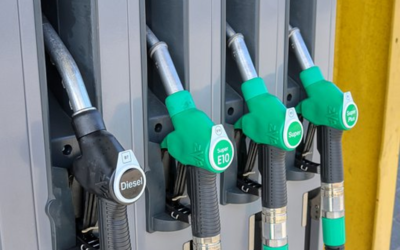Understanding the properties of diesel fuel and the potential dangers associated with its misuse, particularly in petrol engines, is of paramount importance. It’s not merely an issue of performance decline or efficiency loss; misfuelling can lead to serious, costly damage, and in the worst cases, could render a vehicle irreparable. Diesel, a denser and oilier fuel, can foul spark plugs, strain fuel pumps, and inadequately lubricate certain engine components in a petrol engine, leading to increased friction, wear, and tear. These effects underscore the critical necessity of ensuring the appropriate fuel type for your vehicle, to prevent unnecessary damage and expense. As consumers, it’s our responsibility to understand the specific fuel requirements of our vehicles and adhere strictly to them for the longevity of our engines and to uphold the integrity of the complex processes that produce these fuels.
The Vital Role of Diesel Fuel
Diesel fuel plays an indispensable role in modern society, underpinning key sectors and driving economic activity. As a primary energy source, diesel powers a significant proportion of the transportation industry, from commercial lorries to private cars and public buses. Beyond transportation, diesel is fundamental to industrial processes, operating heavy machinery and generators. Its high energy density and economic efficiency make it an irreplaceable fuel source in numerous applications, reinforcing its crucial position in our world.
A key element often overlooked in understanding diesel’s significance is the intricate process of refining it from crude oil. This procedure, which transforms an unrefined substance into a powerful fuel, is a testament to human ingenuity. However, the same characteristics that make diesel an excellent energy source also render it potentially damaging when misused. For instance, accidentally filling a petrol tank with diesel can lead to serious engine complications due to their distinct combustion properties. This underscores the importance of not just appreciating diesel’s role, but also comprehending the careful science behind its production and the ramifications of improper use.
The Distillation Process to create diesel
The distillation process marks the initial stage of refining diesel from crude oil. This process begins with the heating of crude oil at a temperature above 400 degrees Celsius, a point at which it converts into a high-temperature vapour. This vapour then enters a distillation column, a massive tower filled with several trays or plates. As the vapour ascends the column, it starts to cool, and different hydrocarbons begin to condense at distinct levels due to their varying boiling points. The heavier hydrocarbons, including diesel, settle towards the bottom of the tower, while lighter ones such as petrol rise towards the top. This sorting process based on boiling points is the crux of the distillation stage, effectively segregating crude oil into different components, one of which is the raw form of diesel fuel.
Heating in the Distillation Tower
The process of separating various components of crude oil through heating in a distillation tower is a fascinating feat of science. Essentially, the crude oil is pumped into the lower part of the distillation tower, also known as a ‘fractionating column’, and heated to high temperatures. This induces the crude oil to transform into a vapour, which then rises up the column. As the vapour ascends, it encounters a temperature gradient as the column is cooler at the top and warmer at the bottom. Consequently, different components with different boiling points condense at varying levels within the tower.
The components with higher boiling points, such as diesel and lubricating oil, condense on the lower trays of the tower due to the higher temperatures there. Conversely, the ones with lower boiling points, such as petrol and kerosene, rise towards the top, condensing on the upper trays where the temperature is cooler. This process effectively separates the various components of crude oil, enabling them to be collected individually. This vital step in the refining process demonstrates the intricate science behind the production of fuels like diesel, and the crucial role temperature plays in this process
Diesel: The Middle Distillate
It’s of utmost importance to highlight that diesel fuel is obtained as a middle distillate during the process of refining crude oil. Unlike lighter hydrocarbons like petrol and kerosene that ascend towards the top of the distillation tower, diesel does not rise as high due to its heavier molecular weight and higher boiling point. Instead, it tends to condense in the middle section of the distillation column. This strategic position of diesel within the column underscores its distinct characteristics, setting it apart from both the lighter and heavier fractions of crude oil. As a middle distillate, diesel fuel embodies a balance of properties that make it exceptionally effective for certain applications, particularly those requiring high energy density and efficiency. This aspect of the refining process further emphasises the precision and sophistication involved in producing diesel fuel and indeed, the careful art of distillation.
Fractionation and Separation
After distillation, the next pivotal phase in the diesel refining process is fractionation and separation. This involves further separation of the condensed hydrocarbons from the distillation process into more defined fractions. Using further temperature gradients or pressure changes, the condensed mixture is divided into even more distinct components, such as naphtha, middle distillates (including diesel), and heavy residuals. This stage enhances the precision of the refining process, ensuring each fraction is as pure as possible before undergoing further refining.
Hydrotreating and Desulfurization
The hydrotreating and desulfurization stage is critical to producing cleaner diesel fuel. Here, the various fractions undergo a process in which they are combined with hydrogen under high pressure and temperature in the presence of a catalyst. This process helps to remove sulphur, nitrogen, and other impurities that may be present in the fractions. The desulfurization process, in particular, is vital in reducing the sulphur content of diesel fuel, which in turn reduces the emissions of sulphur oxides, a primary contributor to air pollution and acid rain.
Cracking and Isomerization
During the cracking and isomerization phase, larger hydrocarbon molecules are ‘cracked’ or broken down into smaller molecules. This is achieved through the application of heat, pressure, and catalysts. The isomerization process then rearranges these smaller molecules into more desirable structures, such as branching the hydrocarbon chains. These processes increase the yield of valuable lighter products, like diesel and petrol, from crude oil and enhance the quality of the fuel by improving combustion properties.
Hydrocracking and Reforming
The final refining stages of diesel production are hydrocracking and reforming. Hydrocracking further breaks down the heavier fractions of crude oil into lighter ones, similar to the cracking process. However, it does so in the presence of hydrogen and a catalyst, which helps in the removal of additional impurities. In the reforming process, the naphtha fraction is restructured under high heat in the presence of a catalyst to produce high-octane reformates, which are then blended into the final diesel product. This blend achieves the optimal balance of energy efficiency, combustion properties, and emission characteristics, resulting in the high-quality diesel fuel we use today.
Final Treatment
The last stage of the refining process is the final treatment, which ensures diesel fuel meets quality standards by eliminating residual impurities and contaminants. This phase primarily involves processes such as polishing and additive blending.
In the polishing process, the diesel undergoes a filtration technique where particulate matter, remaining impurities, or any unwanted residuals are removed. This enhances the cleanliness and clarity of the fuel.
Additive blending, on the other hand, involves the addition of specific substances to the diesel fuel to improve its characteristics. These additives can enhance properties like cetane number (which improves ignition quality), lubricity, stability, and cold flow performance, while also reducing emissions. They ensure that the diesel fuel performs optimally under various conditions and extends the life of the engines in which the fuel is used.
The final treatment stage is crucial in achieving high-standard diesel fuel, ready for commercial use and compatible with stringent emission regulations worldwide. Through these intricate and well-orchestrated processes, crude oil is transformed into a reliable and efficient diesel fuel that powers various aspects of modern life.
The Perils of Misusing Diesel in a Petrol Engine
- Misfuelling a petrol engine with diesel can cause a range of serious problems. Diesel and petrol are distinctly different fuels, and petrol engines are not built to combust diesel effectively. When diesel is poured into a petrol engine, the first issue arises during the ignition cycle. Diesel has a higher flash point than petrol, meaning it doesn’t ignite as easily. Therefore, a petrol engine may fail to ignite the diesel fuel, leading to a car that won’t start or, if it does start, will run poorly.
- A more critical problem occurs because diesel is a heavier, oilier fuel compared to petrol. When it is injected into a petrol engine, it can coat the spark plugs and fuel system with a greasy residue. Over time, this can lead to the spark plugs becoming fouled, decreasing the vehicle’s performance and fuel efficiency. In the worst-case scenario, it can even lead to serious damage to the engine’s internal components.
- Additionally, diesel fuel lacks the lubricating properties that petrol provides for certain components of a petrol engine. This can result in increased friction in the engine, leading to significant wear and tear over a short period.
- Finally, because diesel is denser than petrol, a petrol pump may struggle to move it through the fuel system, causing strain and potential damage to the pump.
- In summary, using diesel in a petrol engine can lead to decreased performance, potential engine damage, and costly repair bills. It’s crucial to use the right fuel for your vehicle to prevent these problems.
Conclusion
The transformation of crude oil into refined diesel fuel is a sophisticated journey, encompassing a multitude of complex stages. These range from the initial distillation to separate different components of the crude oil, through intricate processes of hydrotreating, desulfurization, cracking, isomerization, and hydrocracking, all designed to break down larger molecules into smaller, more desirable structures. Each stage plays a vital role in removing impurities and enhancing the quality and efficiency of the resulting fuel. The final treatment, involving polishing and additive blending, ensures the fuel’s optimal performance under various conditions and its compliance with global emission regulations. However, understanding this process underscores the importance of fuel type for different engines. Using diesel in a petrol engine can reduce performance, cause significant engine damage, and result in costly repairs, underlining the importance of responsible fuel use.



